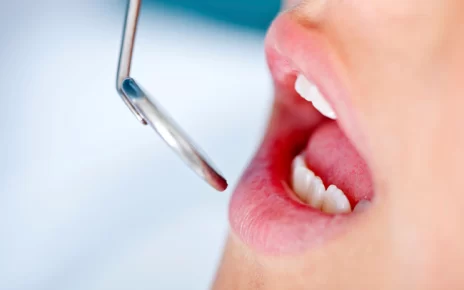If you have a gap in your smile due to missing teeth, we can restore it with a dental bridge. Not only does this treatment improve the aesthetic and boost confidence levels, but it also protects the natural teeth on either side of the space and helps preserve facial structure.
Getting a Dental Bridge
If you’re missing one or more teeth, a bridge can easily and effectively fill in the gap. Not only does it preserve the health and aesthetic of your smile, but it also preserves its natural facial structure.
Your dentist will inspect the area and take x-rays to decide if a dental bridge is suitable for you. Alternatively, you could opt for dental implants as a means of anchoring the bridge in place.
A bridge is a prosthetic tooth consisting of two crowns on either side. Designed to mimic your natural teeth in appearance and feel, a bridge will allow you to smile with assurance when smiling.
Your bridge can last between five and fifteen years with proper care and avoidance of certain habits such as chewing tobacco or smoking cigarettes. Brushing, flossing and regular visits to the dentist are essential for extending its longevity.
The Procedure
If you have one or more teeth missing, dental bridges may be the ideal restorative treatment to fill in the gap. This procedure helps restore the fullness and function of your smile, improve speech and chewing ability, and prevents adjacent teeth from shifting or crookedly extending into the gap.
When considering whether a bridge is right for you, your dentist begins by inspecting and taking X-rays of your mouth to get a comprehensive understanding of the situation and make an informed decision. Once it’s determined that a bridge is necessary, teeth are prepared by filing them into an optimal shape to receive placement of the bridge.
Once prepared, known as abutment teeth, are sent to a dental laboratory and fitted with an individual bridge that closely matches your natural tooth color. You may also receive a temporary bridge during this process in order to protect your abutment teeth while the permanent one is being made.
Preparation
Dental bridges are a popular restorative dentistry solution to fill in gaps caused by missing teeth. Not only are they comfortable and durable, but they require less upkeep than dentures do.
However, bridges require proper care to extend their usefulness. Regular checkups with your dentist or hygienist are essential for preventing plaque and bacteria buildup around and under the bridge.
The initial step in placing a bridge involves prepping the healthy abutment teeth by filing away some enamel to make room for the bridge. Local anesthetic can be used during this process for patient comfort.
Once the abutment teeth have been prepared, impressions will be taken and sent to a lab. These impressions will be used to craft either a temporary bridge or two crowns until a permanent bridge can be placed.
It’s essential to regularly floss threader or use an interproximal brush the area under and around your dental bridge, in order to eliminate any food debris that has accumulated there as well as plaque and bacteria.
Placement
A dental bridge fills in the gap left by missing teeth, giving your smile a renewed look and function. It consists of two crowns attached to healthy teeth on either side of the gap, as well as a false tooth (known as a pontic) which fills in any remaining space.
If you have one or more gaps in your smile, it can be a serious issue for both oral health and bite. The space between teeth may cause the surrounding teeth to shift, leading to issues with bite function as well as loss of gum tissue and jawbone density.
The dental bridge procedure is a secure and efficient way to replace missing teeth. Most procedures can be completed within just a few visits, helping patients sidestep the discomfort or potential risks associated with dental implants





